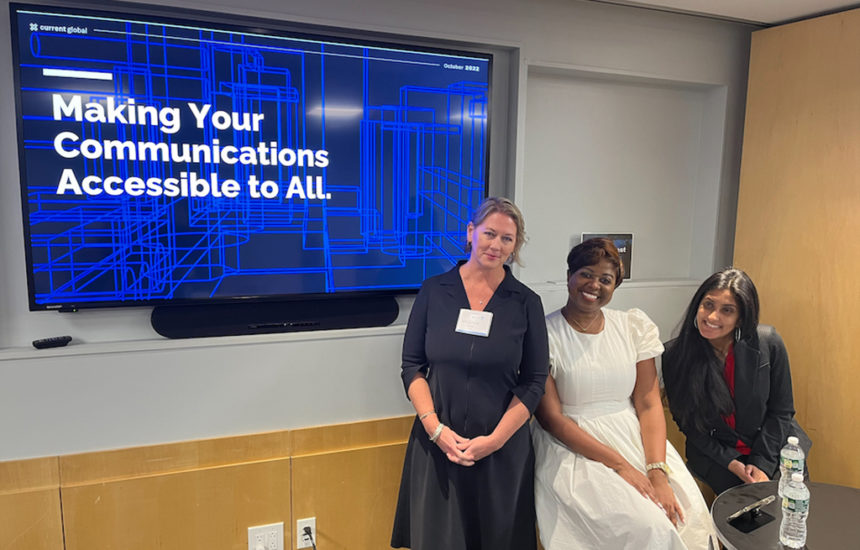As part of National Disability Employment Awareness Month, which runs through October, one PR firm is promoting training to make the workplace more inclusive.
Current Global launched the communications training as part of a larger initiative to meet the highest accessibility standards.
“The work that we are doing really has the opportunity to create more inclusive workplaces,” said Sena Pottackal (pictured below), Current Global junior associate of client experience, diversity equity and inclusion and corporate communications. “Think about the memos, the emails that you receive. If we make those accessible, we can bring people with disabilities into the conversation.”

The two-and-a-half-hour training provides the fundamentals of accessible communications; instructions on how to create disability-inclusive content through language and imagery; and directions on how to integrate accessible communications principles into everyday practice.
The Interpublic Group agency, whose clients include FedEx and Microsoft, launched the Accessible by Design initiative in 2020. It has incorporated alternative text into its social media content and submitted its documents through Microsoft’s Accessibility Checker, which ensures they are easy for people with disabilities to read and edit.
Alternative text is a textual description of an image or visual, such as a chart, to ensure that people who cannot see are able to gather the necessary information.
The training features exercises on how to create an accessible social media post. That includes, for example, using camel case, which means capitalizing the first letter of each word in a hashtag to make it easier to read.
Pottackal, who is blind, said that when her screen reader captures a hashtag with camel case, “it will space out each word. It will say, ‘Accessible by Design,’ as opposed to trying to read all the letters together as a single word.”
The training also includes discussion of audio description, which is a secondary audio track for videos that provides verbal narration for audiences with low or no vision. It also features instruction on how to do self-description, which gives people who are blind, partially sighted and neurodiverse a sense of a person’s appearance.
That can be helpful for people with a low internet bandwidth, too, said Ethan Chiu (pictured below), Current Global junior associate of diversity, equity and inclusion communications and media relations, who created the training with Pottackal.

The two also received assistance from learning and development specialists, clients and organizations such as Disability:IN, a nonprofit dedicated to disability inclusion.
Asked to explain how he would describe himself at a meeting using the standards outlined in the training, he said, “Hi, my name is Ethan Chiu. My pronouns are he/him. I’m a multiracial, Chinese and Mexican cis male with medium brown skin, short black hair and glasses. I’m wearing a white shirt, and I’m currently sitting in an office room with a beige wall behind me.”
Chiu and Pottackal have delivered the training internally at the agency and for its client, Abbott Laboratories, among other groups.
The ultimate goal, Chiu said, is “really just trying to share what we’re doing with everyone else in the industry as we aim to make the industry more accessible.”
This article originally appeared on PRWeek US.








